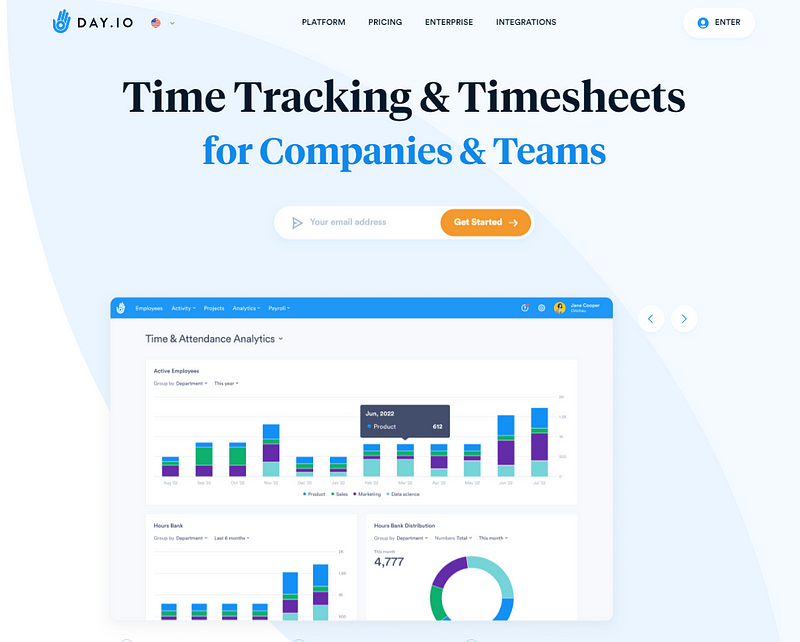Few understand just how complicated construction project management cost estimation can be. It’s a complex balancing act between being both accurate and timely, with the potential for costly delays or unforeseen expenses always lurking around the corner.
That said, it doesn’t have to be an intimidating process. When done correctly, cost estimation can help you plan your project more effectively and manage costs down the line. Your contractors, stakeholders, and team members will thank you for it!
In this guide, we’ll cover everything you need to know about cost estimation in construction project management: from the different types of calculations used, to the steps involved in creating a reliable and accurate estimate.
Let’s dive right in!

What is Construction Project Management Cost Estimation?
Cost estimation in construction project management is the process of predicting what a given project will cost to complete. It’s typically done before any work begins, and the estimates are used as a guide for allocating resources, creating budgets, and setting deadlines.
It can be an incredibly complex process—especially if you’re dealing with large-scale projects—but it’s essential to ensure that everything runs smoothly. Here’s a quick overview of the steps involved:

Construction Project Management Steps
There are six steps involved in the cost estimation process:
- Gathering Information – Collecting all relevant information about the project, such as drawings, specifications, and material requirements.
- Identifying Resources – Understanding which resources are needed for the project and how much they will cost.
- Creating a Project Plan – Developing a plan of action that outlines each task required to complete the project on time and within budget.
- Estimating Labor Costs – Determining how much it will cost to hire personnel, purchase material, and rent equipment.
- Developing a Detailed Budget – Creating an itemized budget that draws from the estimates generated in previous steps.
- Monitoring Progress & Cost Control – Keeping track of progress throughout the project and adjusting the budget as needed to ensure costs stay within target limits.
Each of these steps is important for ensuring the project stays on track and that costs stay within budget.
Types of Cost Estimation
When it comes to cost estimation, there are a few different methods used in construction project management. To keep it simple, we’ll focus on just two: top-down and bottom-up.
Top-down estimation is the process of estimating the overall cost of a project based on past similar projects, or rough estimates from experts. It’s typically used for large-scale projects that require significant resources and planning.
In contrast, bottom-up estimation is used to estimate costs for smaller components of the project such as labor, materials, and equipment. This method requires more detailed information about each task involved in the project but provides a more accurate estimate of costs.
Advantages & Disadvantages
Both approaches have their advantages and disadvantages. Top-down estimation is less time consuming, but the estimates may not be as reliable as those generated using bottom-up estimation. Bottom-up estimation takes more effort upfront, but it’s far more accurate in the long run.
At the end of the day, it’s up to you to decide which method works best for your project—but no matter which you choose, it’s important to be aware of all the potential risks and costs associated with your project.
How to perform top-down cost estimation
Now that we’ve covered the basics, let’s take a look at how to perform top-down cost estimation.
The first step is to collect all relevant information about the project. You should gather any available drawings, specifications, material requirements, and other relevant data from stakeholders and contractors.
Once you have all the necessary information in hand, it’s time to start making estimates. To do this, you’ll need to consider the cost of labor, materials, and equipment. It’s also important to factor in any potential risks that could affect your timeline or budget.
Finally, you should create a project plan that outlines all tasks required for completion and assigns estimated costs to each one. This will help you develop an overall estimate for the entire project.
For example, if you’re building a house, you may divide the project into tasks such as excavation, foundation work, framing, plumbing, electrical work, and so on. Each of these tasks should have estimated costs associated with it.
How to perform bottom-up cost estimation
In contrast to top-down estimation, bottom-up construction project management cost estimation requires more detailed information about the project.
To begin, you’ll need to create a list of all tasks required for completion and assign estimated costs to each one. Then, you should start breaking down each task into its individual components (e.g., labor hours, materials used).
Once you have an itemized list of all components, you can start estimating the cost of each item. It’s important to be as specific and detailed as possible in your estimates, as this will help ensure that you have an accurate budget.
Finally, add up all the estimated costs for each component to get a total cost estimate for the project. This will give you a good idea of how much it will cost to complete the entire project.
Advanced tips for cost estimation
Now that we’ve covered the basics of cost estimation, let’s take a look at some advanced tips to help you get even more accurate estimates.
First and foremost, it’s important to be aware of any potential risks or problems that could affect your timeline or budget. This includes natural disasters, labor shortages, and unexpected delays. By planning for these risks ahead of time, you can ensure that your project stays on track.
It’s also a good idea to factor in any potential cost savings associated with the project. For example, if you can get a bulk discount on materials or rent equipment instead of buying it outright, these savings should be taken into account when estimating costs. Speak with an accountant or financial advisor to help you identify these.
Finally, it’s important to keep track of progress throughout the project and adjust your estimates as needed. This will allow you to ensure costs stay within target limits and provide an accurate picture of how much money is being spent.
Day.io: Time Tracker & Cost Estimation Tool
If you’re looking for an easier way to keep track of costs and deadlines, Day.io is the perfect solution.
Day.io is a web-based time tracker and cost estimation tool designed specifically for construction project management. It allows you to quickly generate accurate estimates based on past projects and easily track progress throughout the entire process.

Plus, it comes with built-in reporting tools that make it easy to monitor expenses and stay within budget.
Do you run a carpenter, electrician, or plumbing business? Day.io is designed to make life easier for contractors, so you can focus on what really matters: getting the job done right and on time!
Integrates with popular project management tools
Asana, and Jira are just a few of the popular project management tools that Day.io integrates with. This means you can easily sync your estimates and progress reports across all platforms for easy access in one place.
It’s fully customizable to fit any workflow, so you can adjust settings as needed – like notifications, automatic reminders, and timekeeping rules – to suit your specific needs.
Set up reports, manage costs, and more
Day.io makes it easy to set up reports, manage costs, and track progress from start to finish. You can generate detailed estimates in minutes, keep an eye on expenses as they come in, and monitor project performance with real-time data.
Plus, the intuitive dashboard provides a comprehensive overview of all your projects so you can easily stay organized and on top of things.
Use geolocation to streamline check-ins
Are you managing a team of contractors or subcontractors? Day.io’s geolocation feature makes it easy to streamline check-ins and ensure everyone is where they need to be.
You can set up custom locations, track time spent on site, and generate detailed reports for each employee in just a few clicks. It’s the perfect way to stay on top of your projects without having to micromanage every detail!

Wrap-up: Construction Project Management Cost Estimation
Cost estimation is a critical part of construction project management. It’s essential to ensure that your projects stay within budget and are completed on time.
There are two main methods used in cost estimation: top-down and bottom-up. Top-down estimation is less time consuming but may not be as reliable, whereas bottom-up estimation takes more effort upfront but provides a more accurate estimate of costs.
Finally, don’t forget to check out Day.io—the web-based time tracker and cost estimation tool designed specifically for construction project management!
